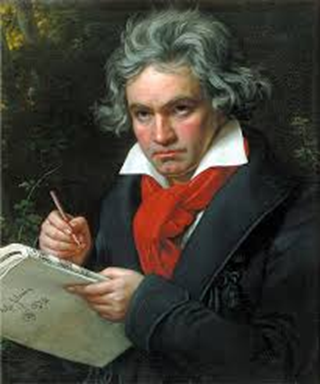3/28/2023 Personal Thoughts about Composers and Their Works - Rachmaninoff
- Takeaki Iida

- Mar 28, 2023
- 4 min read
Updated: Mar 11, 2024
Chapter 10
Sergey Vasilyevich Rachmaninoff (Сергей Васильевич Рахманинов)
(1873~1943, died at 69)

Sergey Vasilyevich Rachmaninoff (Сергей Васильевич Рахманинов) was a great pianist and a composer of modern Russia, and was the leading opera conductor in the last years of the Russian Empire. He was born into a wealthy landowner's family, but his family fell into ruin because of his spendthrift father, and he lives with his maternal family in St. Petersburg. At the age of 9 (1882) he entered the St. Petersburg Conservatory, and at the age of 15 (1888) he studied piano and composition at the Moscow Conservatory.
While he was active in Dresden (Germany) from his thirties, he occasionally returned to Moscow, but due to the Soviet Revolution in 1917, he bought a villa in the suburbs of Luzern (or Lucerne), Switzerland (where his grandson still lives), where he could quietly compose music. From time to time, he composed the masterpiece "Rhapsody on a Theme of Paganini" and others. After that, he moved to the United States (1942) and made Beverly Hills (Hollywood) his second hometown. In his later years, despite Stalin's repeated calls to return, he never set foot in his homeland due to the outbreak of World War II.
Influenced by Tchaikovsky, whom he respected since he was a student at the Moscow Conservatory, he composed many works that blended the styles of German Romanticism and Russian folk music. Most of his masterpieces were written when he was young, before his exile. Most of his masterpieces were written during his youth before his exile. Many of his melodies express sorrow and love for his homeland, and he left many masterpieces, mainly for the piano, in a popular conservative style, which was rare in the era in which he lived.
Rachmaninoff was also an accomplished pianist, and it is said that his hands were as large as 22 white piano keys when put together.

*1 Piano Concerto No. 1
Ashkenazy’s (piano, Pf) Piano Concerto No. 1 (C-26) has a fast tempo and many changes between slow and fast, and I think it is a difficult piece for performers.

*2 Piano Concerto No. 2
A. Piano Concerto No. 2 (R213), performed by the Moscow Philharmonic, conducted by Kondrashin, is also performed by Ashkenazy on the piano.
B. Nobuyuki Tsujii's (Pf) piano performance with Yutaka Sado conducting the Berlin Symphony Orchestra (C-56) has moderate tempos and light performances, so you can enjoy listening to this masterpiece without straining yourself.
C. The performances by several other pianists that I listened were all good, especially Kirill Gerstein (Pf) at the Waldbühne Open-Air Concert (Berlin) with the Berliner Philharmoniker under the baton of Kirill Petrenko (CL2- I really liked Q) because it was a perfect performance for a summer evening in the open air surrounded by forests.
D. Naoko Kawamura (Pf) performed with the NHK Symphony Orchestra under the baton of Fabio Luisi (CL23-X).
*3 Piano Concerto No. 3
A. Horowitz’s (Pf) Piano Concerto No. 3 (C-27) expresses the main melody pleasantly in the first movement.
B. 20-year-old pianist, Mao Fujita (CL20-Q), who performed with the Sendai Philharmonic Orchestra, is said to have performed this piece for the 11th time, and her techniques and expressiveness are overwhelming.
C. Dennis Matsuev (Pf) and the Lucerne Festival Orchestra (CL4-J) conducted by Riccardo Chailly is also an impressive performance.
*4 "Rhapsody on a theme of Paganini"
A. Van Cliburn's performance (R214), the 18th variation, which is famous among its gorgeous and splendid performances, expresses indescribably beautiful and melancholy emotions.
B. The same piece (C-26) by Ashkenazy on the piano has a fast tempo that seems to be even more difficult, and it is splendidly scattered with notes that seem to roll on the keyboard. Even so, the sudden emergence of the beautiful melody of the 18th Variation, which lasts just over three minutes, has made this piece a masterpiece that has become popular with the general public.
*5 Piano Sonata No.2
As long as I listen to Horowitz's performance (C27), I can hear that there is peace in anxiety, but there is also a phrase that slams the keyboard in a furious rage. The melody that deviates from the common sense of the sonata continues to dominate.
Rachmaninoff is called *virtuoso. Virtuoso originally had a moral meaning and meant “a virtuous person.” From around the middle of the 19th century, it has been used to refer to musicians, especially performers, who have excellent technical skills. It means like a master or a master, including Paganini and Liszt, the conductor Furtwängler, the violinist Huberman, and the pianists Cortot and Kempff. They are said to be the last virtuosos.
*6 Preludes works 23 and 32
I listened to Svatraf Richter's piano performance (R412), and unlike the concerto, I felt that it was a piece that I would like to listen to over and over again because it has a very familiar and easy-to-listen melody.
For your reference, the table below shows the list of works by the composer that I listened to.



.png)



Comments